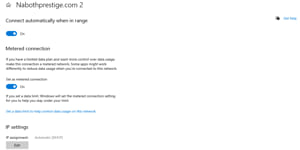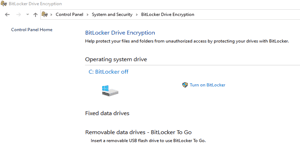Earning a substantial income on YouTube is a plausible endeavor, and it can be achieved through a plethora of strategies and monetization methods. However, it’s crucial to understand that this pursuit demands unwavering dedication, unwavering consistency, and an abundance of creativity. Whether you’re a seasoned content creator or just embarking on your YouTube journey, success hinges on your commitment to your craft, your ability to maintain a regular presence on the platform, and your capacity to infuse your content with innovation and uniqueness.
To assist you in your quest for YouTube prosperity, we’ve compiled a set of pivotal steps that can serve as your foundation. These steps encompass various facets of your YouTube journey, from content creation and audience engagement to leveraging monetization avenues effectively. While these steps are not a guaranteed path to overnight riches, they provide a structured and strategic approach that, when diligently followed and adapted to your unique niche and style, can significantly enhance your chances of financial success on this dynamic video-sharing platform.
Creating a YouTube channel
Creating a YouTube channel is a straightforward process. Here’s a step-by-step guide:
- Sign in to YouTube: You’ll need a Google account to create a YouTube channel. If you don’t have one, you can easily create it by going to the Google account creation page (https://accounts.google.com/SignUp ).
- Access YouTube Studio: Once you’re signed in, go to YouTube’s homepage (https://www.youtube.com/ ) and click on the profile picture in the top-right corner. From the dropdown menu, select “Your Channel.” This will take you to YouTube Studio.
- Create Your Channel: In YouTube Studio, click the “Create Channel” button. You’ll have the option to use your real name or create a custom name for your channel. If you plan to use your channel for personal branding, you can use your real name. If it’s for a specific niche or brand, consider a name that reflects that.
- Customize Your Channel: After creating your channel, you can customize it further. Add a profile picture (usually your logo or a picture of yourself) and channel art (a banner image). This helps viewers recognize your channel.
- Add Channel Description: Write a brief but engaging description of your channel in the “Description” section. Explain what your channel is about and what viewers can expect to see.
- Upload Your First Video: Now, you’re ready to upload your first video. Click the “Upload Video” button, select the video file from your computer, add a title, description, and tags. You can set the video as public, private, or unlisted.
- Optimize Video Settings: In the video settings, you can customize various options, such as adding an end screen, adding cards, and selecting the video’s category. Use relevant keywords in the title, description, and tags to improve discoverability.
- Publish Your Video: After filling in the necessary information, click the “Publish” button to make your video live on your channel.
Create Quality Content
Crafting high-quality content is the cornerstone of a successful YouTube channel. It’s not just about recording and uploading; it’s about creating an experience that resonates with your target audience. This entails meticulous planning, scripting, and meticulous editing. Ensure that your videos are visually appealing, with crisp visuals and clear audio. In addition, aim for engaging storytelling or informative presentations that keep viewers hooked from start to finish. Experiment with various content formats, such as how-to guides, product reviews, or storytelling vlogs, to find what works best for your channel’s theme and audience.
Use Smartphone to Create High Definition Videos
Build Your Audience
Growing your YouTube audience is a multifaceted process that extends beyond just numbers. While subscriber counts are important, fostering a loyal and engaged community is even more valuable. Dedicate time to connect with your viewers through thoughtful responses to comments, Q&A sessions, or even live streams. Social media platforms can be powerful tools for audience engagement, allowing you to share behind-the-scenes content, updates, and sneak peeks of upcoming videos. Encourage viewers to subscribe and turn on notifications so they don’t miss your latest uploads. Building a genuine connection with your audience can lead to long-term success on the platform.
Enable Monetization
To unlock the potential for direct monetization on YouTube, you must meet the eligibility criteria for the YouTube Partner Program (YPP). Achieving this milestone requires not only reaching 1,000 subscribers but also accumulating at least 4,000 watch hours on your channel within the past 12 months. Once approved for YPP, you gain access to features like enabling ads on your videos. However, remember that this is just the beginning of your monetization journey, and other revenue streams can further bolster your earnings.
Ad Revenue
The primary revenue source for many YouTubers is ad revenue, which involves sharing a portion of the advertising income generated from your videos. The exact amount you earn varies based on several factors, including your channel’s niche, the geographic location of your viewers, and the type of ads displayed. Successful YouTubers often diversify their income streams to reduce reliance on ad revenue alone, as it can fluctuate and is subject to YouTube’s policies and changes in the platform’s algorithms.
Channel Memberships and Merchandise Shelf
Once you’ve cultivated a dedicated fan base, consider implementing channel memberships and a merchandise shelf on your channel. Channel memberships allow subscribers to pay a monthly fee in exchange for exclusive perks, such as custom badges or access to members-only content. Meanwhile, the merchandise shelf lets you showcase and sell branded products directly within your videos. This provides an additional revenue source while strengthening your connection with your most loyal supporters.
Super Chat and Super Stickers
- Super Chat: Super Chat allows viewers to make their messages stand out during a live stream by pinning them to the top of the chat window for a set amount of time. To use Super Chat, viewers pay a specific amount of money (the amount varies based on their choice), and their message is highlighted, often in a color chosen by the viewer. Creators can see these messages easily and interact with them. Creators earn a share of the revenue generated from Super Chats.
- Super Stickers: Super Stickers are animated images or emojis that viewers can purchase and send during live streams or premieres to express their support or reactions. These stickers can vary in design and price. Creators earn a portion of the revenue from Super Stickers based on viewer purchases.
Affiliate Marketing
- Selecting Affiliate Programs: To engage in affiliate marketing, you’ll need to join affiliate programs relevant to your niche. Many companies and online retailers offer affiliate programs where you can obtain unique tracking links or codes.
- Promotion in Video Descriptions: In your video descriptions, you can include these affiliate links or codes along with a brief recommendation or review of the product or service. It’s essential to disclose your affiliate relationship transparently to maintain trust with your audience.
- Earning Commissions: When viewers click on your affiliate links and make a purchase, you earn a commission on the sale. Commissions can vary widely depending on the program and product, ranging from a small percentage of the sale to a fixed fee.
Sponsorships
- Attracting Sponsors: As your channel grows in popularity and influence, companies may approach you with sponsorship opportunities. Alternatively, you can proactively reach out to potential sponsors or use platforms that connect creators with brands looking for collaborations.
- Transparency: It’s crucial to be transparent with your audience about sponsored content. Disclose any paid partnerships or product placements clearly in your video, often at the beginning or in the description. This transparency helps maintain trust with your viewers.
- Negotiating Agreements: When negotiating sponsorships, discuss terms such as compensation, content requirements, and deliverables. Ensure that the sponsored content aligns with your channel’s values and interests to provide genuine value to your audience.
Crowdfunding
- Platform Selection: Platforms like Patreon, Ko-fi, and SubscribeStar allow you to set up profiles where your most dedicated fans, often called “patrons” or “supporters,” can pledge financial support to you on an ongoing basis. Each platform has its features and fee structures, so choose the one that suits your needs best.
- Exclusive Content: In exchange for their support, you can offer exclusive perks to your patrons. This may include early access to videos, behind-the-scenes content, Q&A sessions, or personalized shout-outs.
- Regular Engagement: Consistent engagement with your crowdfunding supporters is essential. Interact with them, fulfill the promised perks, and show appreciation for their support. Maintaining this close connection can encourage ongoing support and loyalty.
YouTube Premium Revenue
- YouTube Premium: YouTube Premium is a subscription service that offers ad-free viewing, offline downloads, and access to YouTube Originals. As a YouTube content creator, you can earn a share of the subscription revenue based on how much time Premium members spend watching your content. This means that even viewers who have YouTube Premium can indirectly support your channel.
- No Ad Revenue Impact: The revenue you earn from YouTube Premium doesn’t affect the ad revenue you earn from ads displayed on your videos. This is an additional revenue stream that can provide a stable income source.
Sell Digital Products
- Digital Products: If you have expertise in a specific niche or subject related to your YouTube content, consider creating and selling digital products. These can include e-books, online courses, presets (for photography or video editing), templates, or any other digital item that provides value to your audience.
- E-commerce Platforms: You can set up your digital product store on platforms like Gumroad, Teachable, or even your own website. Promote these products within your videos and video descriptions, offering your viewers valuable resources related to your content.
- Exclusive Content: Consider offering exclusive digital products or discounts to your channel members or supporters on crowdfunding platforms as a way to reward their support.
Consulting and Coaching
- Expertise: If your YouTube channel positions you as an expert in your niche or industry, you can leverage your knowledge and offer consulting or coaching services to your audience. This is particularly effective if you’re in fields such as business, finance, fitness, or personal development.
- One-on-One or Group Sessions: You can offer one-on-one consulting sessions or group coaching sessions through video calls, webinars, or even in-person meetings if practical. Tailor your services to the needs and preferences of your audience.
- Pricing and Transparency: Clearly outline your consulting or coaching services, pricing structure, and availability. Being transparent and providing clear value propositions will attract clients interested in your expertise.
Stay Consistent
- Content Schedule: Establishing and sticking to a content schedule is essential for retaining and growing your audience. Viewers are more likely to subscribe and return to your channel if they know when to expect new content.
- Quality Over Quantity: While consistency is important, prioritize the quality of your content. It’s better to create fewer high-quality videos than to rush and compromise on quality. Find a balance that works for you and your audience.
- Engagement: Consistency doesn’t end with uploading videos. Engage with your audience through comments, social media, and live streams. Building a strong and active community around your channel can contribute to long-term success.
Optimize for SEO
- Keyword Research: Conduct thorough keyword research to identify the terms and phrases that are relevant to your video’s content and are commonly searched by your target audience. Tools like Google Keyword Planner, Ubersuggest, or YouTube’s built-in search suggest feature can help you find suitable keywords.
- Title Optimization: Craft your video titles to be not only descriptive but also keyword-rich. Place your target keywords near the beginning of the title, but ensure it remains engaging and compelling. A well-optimized title can significantly improve your video’s discoverability in search results.
- Description: Write a detailed and informative video description that elaborates on the content of your video. Include relevant keywords naturally throughout the description. Provide additional context, links to related content, and timestamps for key sections of the video.
- Tags: Use a mix of broad and specific tags that relate to your video’s topic. Tags help YouTube’s algorithm understand the content of your video and can increase its chances of being recommended alongside similar content.
- Thumbnail: Design eye-catching thumbnails that are not only visually appealing but also relevant to your video’s content. A compelling thumbnail can entice viewers to click on your video when it appears in search results or recommendations.
Engage with Your Audience
- Respond to Comments: Regularly check and respond to comments on your videos. Engage with your audience by answering questions, acknowledging feedback, and participating in discussions related to your content. Viewers are more likely to subscribe and return if they feel heard and appreciated.
- Ask for Feedback: Encourage viewers to provide feedback on your videos. Ask them to share their thoughts, ideas for future content, or suggestions for improvement. This not only shows that you value their input but also helps you refine your content.
- Community Building: Foster a sense of community among your viewers by creating a welcoming and inclusive atmosphere. Address your audience as if you’re having a conversation with friends. Use community features like polls, live chats, and community posts to engage with your audience outside of your videos.
- Live Streams and Q&A Sessions: Hosting live streams and Q&A sessions can provide a more direct and interactive connection with your audience. It allows viewers to ask questions in real-time and strengthens the bond between you and your community.
- Moderation: Consider appointing moderators for your live chats and comments to ensure a positive and respectful environment. This helps prevent spam and maintains a healthy community.
Engaging with your audience not only helps with viewer retention and growth but also creates a loyal fan base that is more likely to support your channel through various monetization methods, such as memberships, merchandise sales, and crowdfunding. Building a community around your content is a key factor in long-term success on YouTube.
Remember, it takes time to build a successful YouTube channel, and not everyone achieves massive success. Be patient and focus on creating content you enjoy and that resonates with your audience. Adapt your strategies based on viewer feedback and trends in your niche.
Share on:






